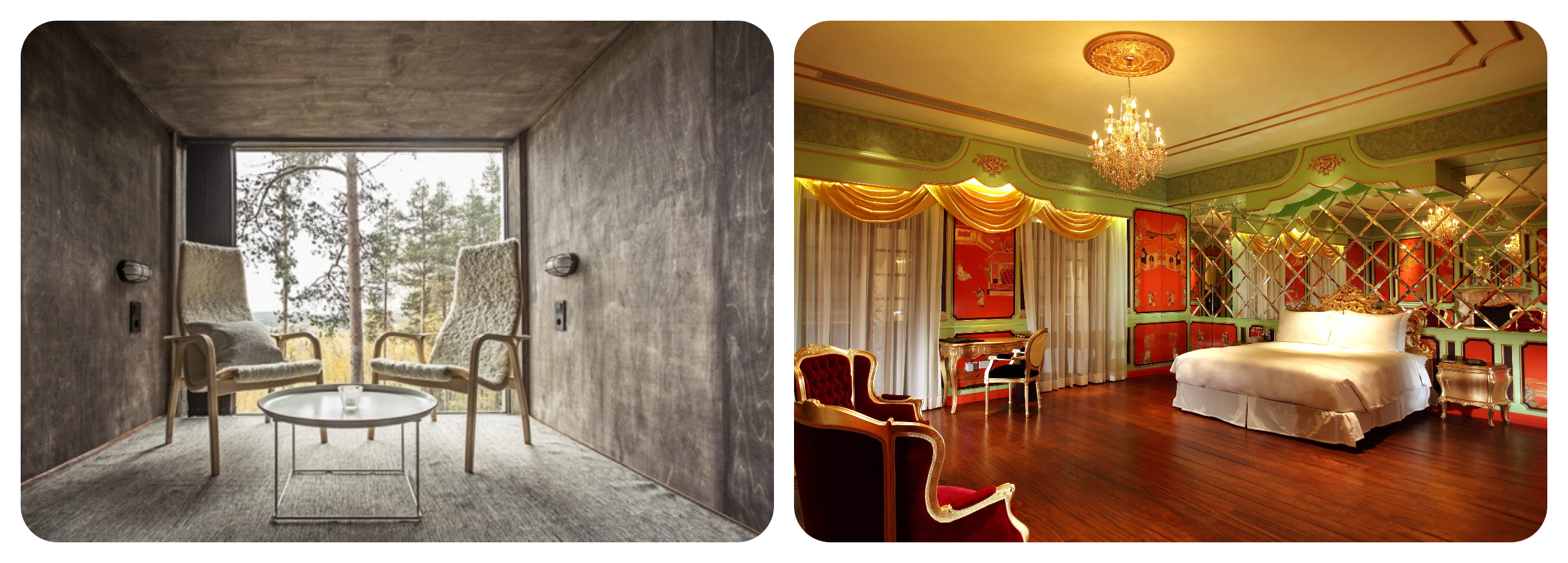Minimalism
The minimalist movement in the field of architecture started in the 20th century. It is a design that is characterised by austerity and parsimonious use of resources. ‘Less Is More’ is the overarching guiding principle. It aims to retain only essential elements and do away with anything unnecessary. Ludwig Mies van der Rohe is the German architect first credited with outlining the basic principles of the movement. He advocated the use of modern materials such as steel and glass and promoted the idea of large, open spaces designed in strict geometric shapes. This concept draws attention to the few elements used and makes them stand out more.
Minimally designed interiors are often defined by simple, often black and white or at most binary colour palette. Furniture is usually designed in very simple geometric shapes and monochromatic tones. Spaces tend to be open plan and without partitions and often feature clever storage solutions. For example, cabinets and shelves can easily be built in or attached to walls, thus saving space.
Because of its simplicity, minimalist design has gained a lot of popularity in recent years. There are obvious benefits to this trend. Minimalism is all about ‘trimming unnecessary fat’ and is therefore beneficial for anyone without much space to spare. In that way, smaller scale hotels can make the most use of space by reducing clutter and creating a more spacious interior. A well-designed minimalist hotel can also bring guests more peace of mind by creating a sense of calmness and serenity, further enhancing their stay (it’s not surprising that a lot of SPA interiors are designed with minimalist principles in mind!)
Treehouse in Sweden is a fantastic example of minimalist design done well. Imagine living in a cube-shaped room made up of mirror that reflects its surroundings, suspended up in a tree in the northern region of Lapland. Though each room has a different theme and tells its own story, they are all designed in classic Scandinavian Minimalist style. With very simple interior design, this is the closest you get to living with just the bare necessities.
Maximalism
In exact opposition to the minimalist movement, the Maximalists are governed by an equally bold principle: ‘The Bigger, The Better’. Maximalism has been evident in music, literature and the visual arts at the end of the 20th century and was the rather obnoxious answer to the stingy use of materials and space in the field of interior design.
The movement encourages making the most of a space and utilising a wide variety of elements and resources. Maximalism uses a bold colour palette and embraces the idea of excess. Think busy, bright and textured interiors filled with repetitive patterns and graphic representations. However, far from it being a movement that promotes hoarding and cluttering, there is a method to the seeming ‘madness’ of maximalist interior design. Colours and patterns are carefully weaved together to avoid messy and intimidating results. Although this style can be daunting at first glance, once the eye gets used to the busyness, intricate themes begin to emerge.
Interiors will often feature some very unique statement pieces with a backdrop of a combination of styles such as Art Deco and Eclectic. Maximalism is a very emotional style, often bringing up strong and passionate feelings, as opposed to Minimalism’s somewhat sterile vibe. ’Connecting the dots’ is an expression often used by Maximalist aficionados and it refers to ensuring there is a sense of careful continuity in the seemingly endless sea of visual stimulation. A stay at a hotel with a maximal design is in and of itself an adventure, a potentially unforgettable experience that stimulates every sense.
Hullett House in Hong Kong is one interesting example of maximalist style with an eastern twist. Being the oldest building in the city, the hotel retains its heritage by integrating historic photographs, hand-painted murals depicting life under the Tang Dynasty with an overall Kitsch aesthetic. Each suite showcases a different theme designed in a gloriously maximal style.
Still undecided? Fear not. London’s Curtain hotel has designed the first half and half hotel suite. The room is literally split right down the middle of the bed and features both styles in equal proportions. Which one will you gravitate towards?

Recent Comments